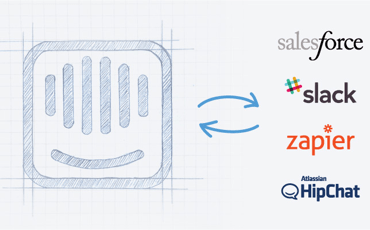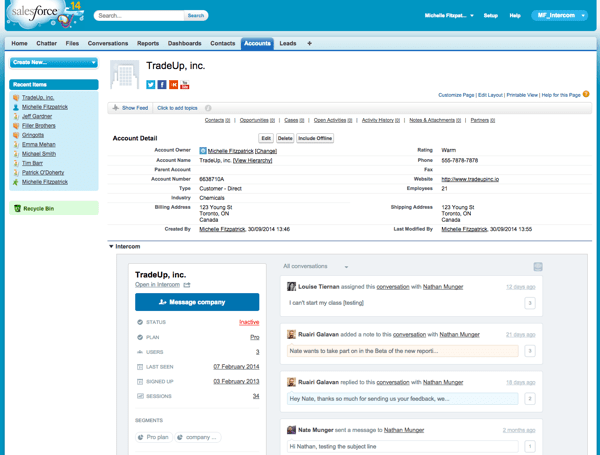Building a platform at Intercom

When you think of Salesforce.com, what do you think of? The CRM tool for salespeople? A product for managing marketing campaigns? Or the platform that enables thousands of apps to integrate with a company’s Salesforce data?
Salesforce pioneered the SaaS model and took it mainstream. But 15 years after it was founded it’s hardly surprising it is the target of criticism from a new generation of startups that followed in its wake. The CRM provider is generally criticised for not being innovative enough – nothing more than Siebel in the cloud being just one recent put-down.
But to write off Salesforce like that is to ignore how it has successfully reinvented itself in recent times. Last year Techcrunch wrote that Salesforce is a platform company. Period. Platform companies exist to provide environments for development, bring producers and consumers together, and enable customers’ creativity. What this means in a B2B context is making fewer assumptions about how customers want to run their business, and instead providing a canvas for solving problems. When Salesforce reached 2 million downloads on its AppExchange they cemented their position as a company that understands and embraces this business need.
The Salesforce Way vs The Intercom Way
Salesforce ultimately is trying to provide an environment for flexible business requirements, but not without requiring an investment to learn the details of their platform. For third party developers this usually includes learning a proprietary language and understanding Salesforce’s usage limits.
At Intercom we’re taking a different approach to building a platform. Our philosophy involves simple, easily accessible APIs, webhooks, and open-source client libraries targeting popular languages and protocols widely used by programmers.
As well as providing for the tools that you are comfortable working with we’ve also built some apps and integrations for Intercom ourselves. These bring Intercom’s capabilities and your valuable data into some of the more popular products we know that you are also using.
Intercom’s Salesforce Integration
Our Salesforce integration is designed to allow you to access your Intercom data inside your Salesforce workflows. This way, you can keep the personal conversations you’re having with users and companies on Intercom in view at all times when engaging a lead, contact or account in Salesforce.

Alongside our Salesforce integration, you can now also use Zapier and Webhooks to keep your user base organised. This means achieving a unified view of your customers across the products you use, without writing a single line of code.
Platform at Intercom
Customers can be constrained into unique workflows because they do interesting or unusual things, often involving complex real-world objects like MRI machines in hospitals, or wearable devices on oil rigs. Additionally customers often have strong, clear convictions about how their business processes should work, and require the products they use to map to their ideas, not the other way around. We believe the technology should enable the workflow, not dictate changes in it.
At Intercom, in a few months we’ve built our new public API, Webhooks, and client libraries, which have opened up a vast amount of new functionality. Additionally, we’ve shipped Salesforce, Slack, and totally overhauled Zapier and Hipchat integrations.
Currently our customers are using these to extend their Intercom UI; gain a real time view of customer support using real time chat apps like Slack, Hipchat, and Kato; use Intercom as a backend for form and contact tools; and integrate with sales and marketing software.
This is just the beginning. We are committed to building a platform that will allow you to extend and use Intercom to accomplish unpredictable and extraordinary business use-cases.
Interested in building an integration with Intercom? Join the Developer Program and get listed.







